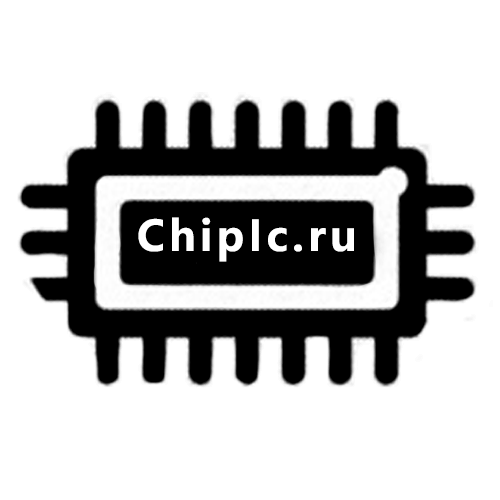160MT160KB Vishay Semiconductor Diodes Division RECT BRIDGE 1600V 160A MTK
Diskreetsed pooljuhid
Tootja number:
160MT160KB
Tootekategooria:
Kirjeldus:
RECT BRIDGE 1600V 160A MTK
RoHs olek:
Andmetabelid:
Osa olek :
Obsolete
Paigaldustüüp :
Chassis Mount
Pakend/ümbris :
MTK
Pakendamine :
Bulk
Pinge – edasi (Vf) (maksimaalne) @ Kui :
-
Pinge – tipp-tagurpidi (max) :
1.6kV
Praegune – keskmine parandatud (Io) :
160A
seeria :
-
Tarnija seadmepakett :
MTK
Tehnoloogia :
Standard
Töötemperatuur :
-40°C ~ 150°C (TJ)
Vool – vastupidine leke @ Vr :
10mA @ 1600V
Dioodi tüüp :
Three Phase
Laos
55,459
Ühiku hind:
Võtke meiega ühendust Pakkumine
160MT160KB Konkurentsivõimelised hinnad
ChipIcil on ainulaadne tarneallikas. Pakume oma klientidele 160MT160KB konkurentsivõimelise hinnaga. Saate nautida meie parimat teenust, ostes ChipIc 160MT160KB. Parima hinna saamiseks saidil 160MT160KB võtke meiega ühendust.
Hinnapakkumise saamiseks klõpsake
160MT160KB Iseärasused
160MT160KB is produced by Vishay Semiconductor Diodes Division, belongs to Dioodid – sildalaldid.
160MT160KB Toote üksikasjad
:
160MT160KB – Dioodid – sildalaldid disainitud puhvervõimendid ja toodetud Vishay Semiconductor Diodes Division.
160MT160KB, mida pakub Vishay Semiconductor Diodes Division, saab osta CHIPMLCC-st.
Siit leiate erinevaid juhtivate tootjate elektroonilisi osi rahu.
CHIPMLCC 160MT160KB on range kvaliteedikontrolliga ja nõuetele vastav kõike nõuetele.
CHIPMLCC-s näidatud fondi staatus on ainult viitamiseks.
Kui te ei leia otsitavat osa, võtke meiega ühendust lisateavet, näiteks varude arvu andmetabelis 160MT160KB (PDF), hind 160MT160KB, Pinout 160MT160KB, manuaal 160MT160KB Ja 160MT160KB asenduslahendus.
160MT160KB, mida pakub Vishay Semiconductor Diodes Division, saab osta CHIPMLCC-st.
Siit leiate erinevaid juhtivate tootjate elektroonilisi osi rahu.
CHIPMLCC 160MT160KB on range kvaliteedikontrolliga ja nõuetele vastav kõike nõuetele.
CHIPMLCC-s näidatud fondi staatus on ainult viitamiseks.
Kui te ei leia otsitavat osa, võtke meiega ühendust lisateavet, näiteks varude arvu andmetabelis 160MT160KB (PDF), hind 160MT160KB, Pinout 160MT160KB, manuaal 160MT160KB Ja 160MT160KB asenduslahendus.
160MT160KB FAQ
:
1. What is a semiconductor?
A semiconductor is a material with electrical conductivity between that of a conductor and an insulator. It can be used in electronic devices to control the flow of current.
2. What are the key characteristics of a semiconductor?
Semiconductors have properties such as variable conductivity, bandgap energy, and mobility of charge carriers, which make them suitable for use in electronic devices.
3. How does a semiconductor diode work?
A semiconductor diode allows current to flow in one direction only. When a forward voltage is applied, it conducts, but when the voltage is reversed, it blocks the flow of current.
4. What is the role of doping in semiconductors?
Doping is the process of intentionally introducing impurities into a semiconductor to change its electrical properties. This is crucial for creating p-n junctions and controlling conductivity.
5. What is the difference between N-type and P-type semiconductors?
N-type semiconductors are doped with elements that provide extra electrons, while P-type semiconductors are doped with elements that create electron deficiencies or "holes."
6. How do semiconductors contribute to integrated circuits (ICs)?
Semiconductors are the foundation of ICs, serving as the base material for transistors, diodes, and other components that enable the miniaturization and integration of electronic circuits.
7. What are some common failure modes in semiconductors?
Common failure modes include thermal stress, electrical overstress, and aging-related degradation, which can lead to performance degradation or complete failure of the semiconductor device.
8. How is the reliability of semiconductors tested?
Reliability testing involves subjecting semiconductors to various stress conditions, such as temperature cycling, humidity exposure, and electrical stress, to assess their long-term performance and durability.
9. What advancements are being made in semiconductor technology?
Advancements in semiconductor technology include the development of new materials, such as wide-bandgap semiconductors, and innovative manufacturing processes to improve efficiency and performance.
10. How are semiconductors contributing to renewable energy applications?
Semiconductors play a critical role in renewable energy technologies like solar panels and wind turbines, where they help convert and manage electrical energy from sustainable sources.
I hope these answers are helpful!
A semiconductor is a material with electrical conductivity between that of a conductor and an insulator. It can be used in electronic devices to control the flow of current.
2. What are the key characteristics of a semiconductor?
Semiconductors have properties such as variable conductivity, bandgap energy, and mobility of charge carriers, which make them suitable for use in electronic devices.
3. How does a semiconductor diode work?
A semiconductor diode allows current to flow in one direction only. When a forward voltage is applied, it conducts, but when the voltage is reversed, it blocks the flow of current.
4. What is the role of doping in semiconductors?
Doping is the process of intentionally introducing impurities into a semiconductor to change its electrical properties. This is crucial for creating p-n junctions and controlling conductivity.
5. What is the difference between N-type and P-type semiconductors?
N-type semiconductors are doped with elements that provide extra electrons, while P-type semiconductors are doped with elements that create electron deficiencies or "holes."
6. How do semiconductors contribute to integrated circuits (ICs)?
Semiconductors are the foundation of ICs, serving as the base material for transistors, diodes, and other components that enable the miniaturization and integration of electronic circuits.
7. What are some common failure modes in semiconductors?
Common failure modes include thermal stress, electrical overstress, and aging-related degradation, which can lead to performance degradation or complete failure of the semiconductor device.
8. How is the reliability of semiconductors tested?
Reliability testing involves subjecting semiconductors to various stress conditions, such as temperature cycling, humidity exposure, and electrical stress, to assess their long-term performance and durability.
9. What advancements are being made in semiconductor technology?
Advancements in semiconductor technology include the development of new materials, such as wide-bandgap semiconductors, and innovative manufacturing processes to improve efficiency and performance.
10. How are semiconductors contributing to renewable energy applications?
Semiconductors play a critical role in renewable energy technologies like solar panels and wind turbines, where they help convert and manage electrical energy from sustainable sources.
I hope these answers are helpful!
160MT160KB Seotud märksõnad
:
160MT160KB Hind
160MT160KB Maalimine
160MT160KB Tihvtide pinge
Pakkumised: Kiire hinnapakkumise kontroll
Minimaalne tellimus: 1
Sisaldab "160M" seeria tooteid

